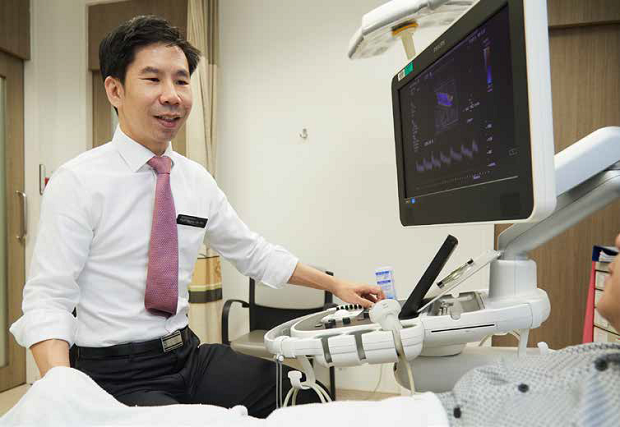
New programme for diabetic ulcers ensures quick treatment for most patients in outpatient clinics without the need for a hospital stay.
In the past, diabetes patients visiting Singapore General Hospital’s (SGH) Emergency Department with foot ulcers were automatically admitted for treatment by specialists.
While this ensured that serious ulcers were quickly seen to, it meant that those with minor wounds were ushered into admission, taking up beds that could have been given to those with more urgent needs.
Since 2022, however, only those with an urgent need to be treated in hospital were admitted while the others were cared for in outpatient clinics under a new structured programme called Rapid Access FooT, or RAFT.
“We know that diabetic foot ulcer is the tail end of end-stage diabetes, and patients with ulcers have a major risk of amputation,” said Professor Chong Tze Tec, Senior Consultant and Head, Department of Vascular Surgery, SGH, noting that 25 per cent of foot ulcer patients underwent amputations a year. “I wanted to improve the outcomes for diabetic foot ulcer patients by giving them quick access to us without having an impact on the already tight hospital bed situation. So RAFT lets us pay more attention to this group of patients by giving them some extra special help and attention through a fast track to a specialised clinic.” Patients are usually admitted for one to two days, sometimes more if their condition requires follow-up consultations with specialists, wound care and dressing changes, and antibiotic infusions.
Patients with end-stage diabetes are prone to foot ulcers, which is an open wound arising from poor blood circulation or from a lack of sensation caused by nerve damage. There is also a risk of the wound becoming infected. A non-healing diabetic ulcer can lead to the toe or foot needing to be amputated. Immediate attention is therefore necessary in patients with diabetic foot ulcers at any stage to prevent amputations.
Patients coming to the RAFT clinic are seen by a multidisciplinary team starting with a vascular surgeon. They may then be referred for a same-day ultrasound scan to assess the blood supply to the leg. If there are blockages, interventional radiologists or other vascular surgeons are called in to perform a revascularisation procedure to restore blood flow to the leg. Nurses are on hand to help with wound care and dressing. A podiatrist may then provide customised footwear to decrease pressure on the wound while walking, thereby encouraging wound healing. If diabetes control is poor, an endocrinologist may get involved to advise on adjusting the dose or changing the medication. All these are seamlessly organised to happen within the same day or the next business day.
While the RAFT clinic is a dedicated service for diabetic patients, it does not turn away non-diabetic patients with foot ulcers should they be referred to the clinic. The clinic currently receives referrals from the SGH Emergency Department, as well as from SingHealth polyclinics and a network of general practitioners. It saw 54 patients in 2022, which more than doubled to 128 patients in 2023.
More patients also avoided being admitted. In 2022, only 16.7 per cent of patients with diabetic foot ulcers needed hospital admission, which dropped to 13.3 per cent in 2023. “These would have been 100 per cent in the past as they would all have been admitted. So, we saved about 85 per cent of patients from being admitted, but still gave them the full care in an expedited fashion,” said Prof Chong.
This makes a big difference for diabetic foot ulcer patients as they tend to be older and may feel uncomfortable in an unfamiliar environment. If hospitalised, communication may be difficult due to the language barriers, or they may simply be averse to hospitals. “So, for those who are not actively infected and are in no urgent risk for amputation, the outpatient setting at the RAFT clinic is a perfect fit,” added Prof Chong.
Get the latest updates about Singapore Health in your mailbox! Click here to subscribe.













 Get it on Google Play
Get it on Google Play